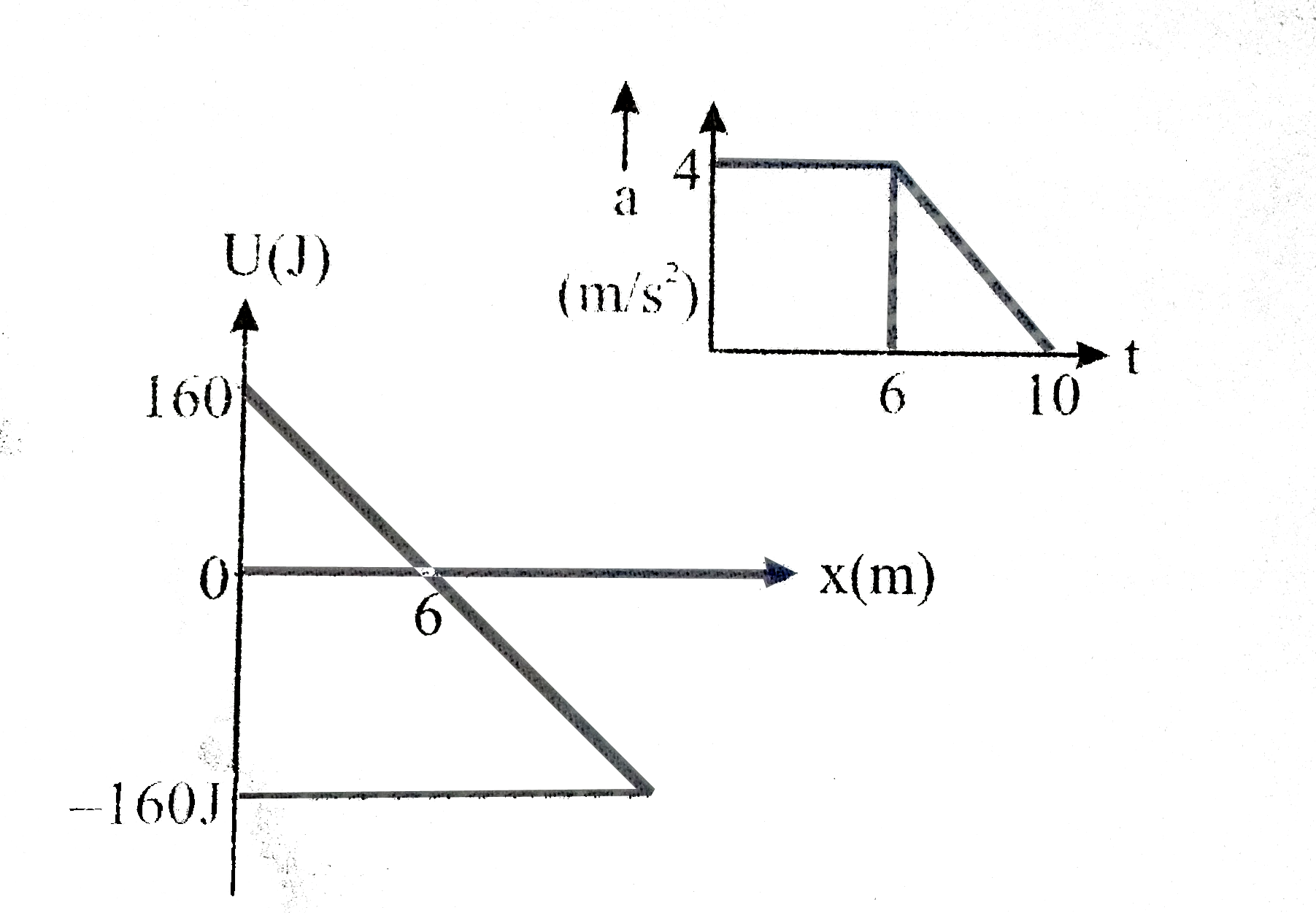If x,F and U denote the dispalcement, force acting on and potential energy of a particle then
U=F
F=+dUdx
F=−dUdx
F=1x(dUdx)
The correct Answer is:C
F=−dvdx
Topper's Solved these Questions
- BOOK - GRB PUBLICATIONCHAPTER - FORCE AND NEWTONS LAWS OF MOTIONEXERCISE - More than one choice is correct15videos
FORCE AND NEWTONS LAWS OF MOTION
- BOOK - GRB PUBLICATIONCHAPTER - FORCE AND NEWTONS LAWS OF MOTIONEXERCISE - Assertion- Reason4videos
FORCE AND NEWTONS LAWS OF MOTION
- BOOK - GRB PUBLICATIONCHAPTER - FORCE AND NEWTONS LAWS OF MOTIONEXERCISE - Problem for practice30videos
FORCE AND NEWTONS LAWS OF MOTION
- BOOK - GRB PUBLICATIONCHAPTER - BASIC MATHEMATICSEXERCISE - Problems For Practice35videos
BASIC MATHEMATICS
- BOOK - GRB PUBLICATIONCHAPTER - FRICTION AND CIRCULAR MOTION EXERCISE - Comprehension type11videos
FRICTION AND CIRCULAR MOTION
Similar Questions
Force acting on a particle is F=−8x in S.H.M. The amplitude of oscillation is 2 (in m) and mass of the particle is 0.5 kg. The total mechanical energy of the particle is 20 J. Find the potential energy of the particle in mean position (in J).
View SolutionA particle of unit mass is moving along the x-axis under the influence of a force and its total energy is conserved. Four possible forms of the potential energy of the particle are given in column-I (a and U0 are constants). Match the potential energies in column-I to the corresponding statement(s) in column-II.
(A)U1(x)=U02[1−(xa)2]2(P)the force acting on the particle is zero at x = a.(B)U2(x)=U02(xa)2(Q)the force acting on the particle is zero at x = 0.(C)U2(x)=U02(xa)2exp[−(xa)](R)the force acting on the particle is zero at x = 0.(D)U4(x)=U02[xa−13(xa)3](S)The particle experiences an attractive force towards x = 0 in the region | x | < a(T)The particle with total energyU04 can oscillate about the pointx=−a.View Solution
Knowledge Check
- Question 1 - Select One
If x,F and U denote the dispalcement, force acting on and potential energy of a particle then
AU=FBF=+dUdxCF=−dUdxDF=1x(dUdx) - Question 2 - Select One or More
A particle is executing SHM with amplitude A. At displacement x=(−A4), force acting on the particle is F, potential energy of the particle is U, velocity of particle is v and kinetic energy is K. Assuming potential energyh to be zero at mean position. At displacement x=A/2
AForce acting on the particle will be 2FBpotential energy of the particle will be 4U.Cvelocity of particle must be √45vDkinetic energy of particle will be 0.8 K - Question 3 - Select One
A particle is executing SHM. At a displacement y1 its potential energy is U1 and at a displacement y2 its potential energy is U2. The potential energy of the particle at displacement (y1+y2) is
AU1+U2B√U21+U22CU1−U2DU1+U2+2√U1U2
A particle of mass 1kg is moving X-axis. Its velocity is 6m/s at x=0. Acceleration-displacement curve and potential energy-dispalcement curve of the particle are shown :
 .View Solution
.View SolutionA particle which is constant to move along the x−aξs , is subjected to a force in the same direction which varies with the distance x of the particle from the origin as F(x)=−Kx+ax3 . Hero K and a are positive constant . For x≥0, the fanctional from of the patential every U(x) of the particle is
View SolutionThe potential energy of a particle (Ux) executing SHM is given by
View SolutionThe force acting on a 4gm mass in the potential field U=8x2atx=−2cm is :
View SolutionA particle, which is constrained to move along the x-axis, is subjected to a force from the origin as F(x)=−kx+ax3. Here k and a are origin as F(x)=−kx+ax3. Here k and a are positive constants. For x=0, the functional form of the potential energy U(x) of particle is.
View Solution

